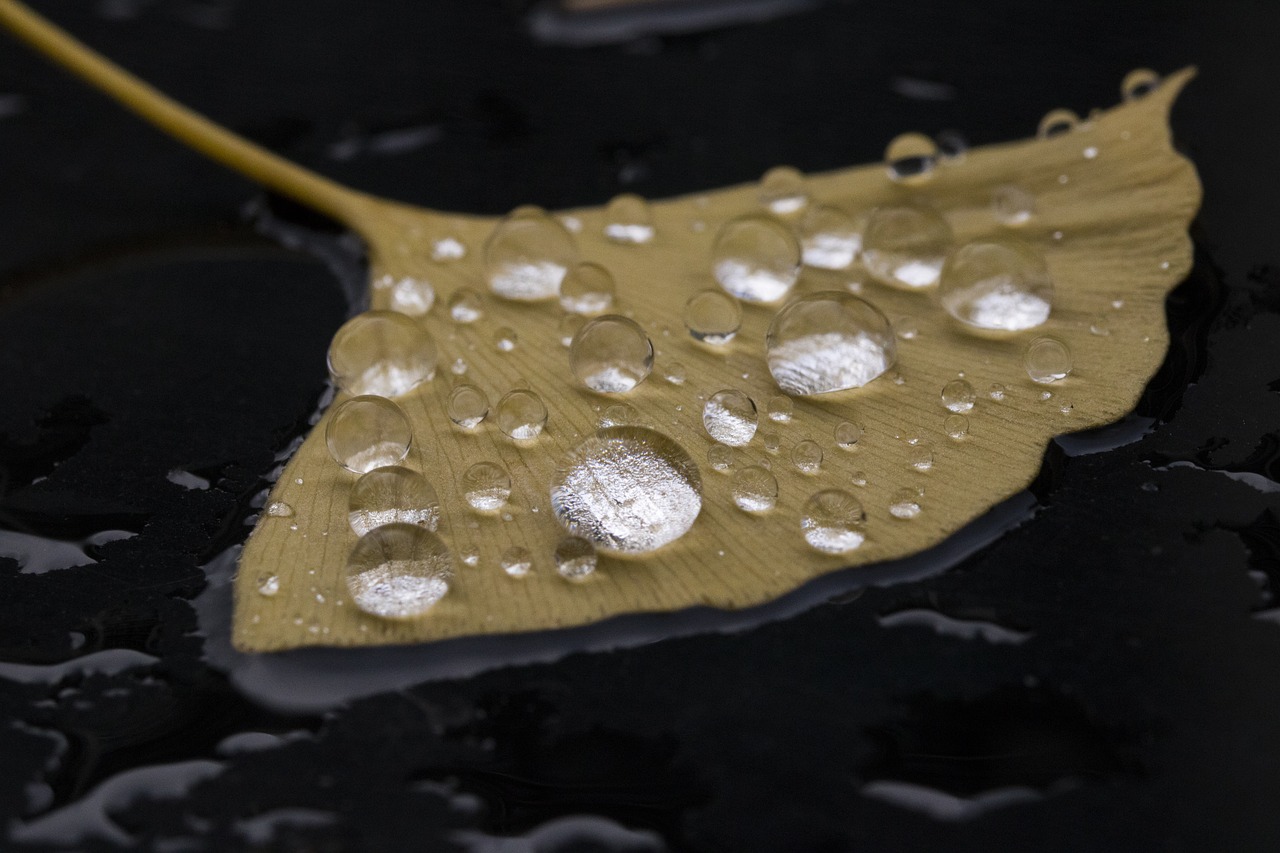If you’ve ever wondered how to make the most out of the natural resource pouring from the skies, this article is here to offer you a comprehensive guide. Discover the most efficient techniques and innovative methods to collect rainwater, from the classic rain barrels to cutting-edge rain harvesting systems. With a little bit of planning and creativity, you’ll not only conserve water but also contribute to a sustainable future. So, let’s dive into the world of rainwater collection and explore the endless possibilities waiting to be explored.
Types of Rainwater Collection Systems
Rain Barrels
Rain barrels are one of the most common and simple rainwater collection systems. They are typically made from recycled plastic or metal, and they are designed to be placed under downspouts to capture rainwater from the roof. Rain barrels usually have a spigot at the bottom for easy access to the collected water. They are affordable, easy to install, and can hold anywhere from 40 to 100 gallons of water. Rain barrels are suitable for small-scale water collection and are ideal for watering gardens or landscapes.
Cisterns
Cisterns are larger rainwater collection systems that provide a higher storage capacity compared to rain barrels. They can hold several hundred to thousands of gallons of water, depending on their size. Cisterns can be constructed from various materials such as concrete, plastic, or metal. These systems are often buried underground or placed in basements to maximize space utilization. Cisterns are suitable for homeowners who require larger amounts of collected water for purposes such as irrigation, toilet flushing, or laundry.
Rainwater Harvesting Systems
Rainwater harvesting systems are comprehensive setups that involve multiple components to collect, filter, store, and distribute rainwater throughout a property. These systems can include features such as gutters, downspouts, rainwater filters, pumps, and distribution networks. They are highly customizable and offer the flexibility to cater to specific water needs. Rainwater harvesting systems are suitable for commercial or large-scale applications where significant water volumes are required for various purposes, including irrigation, industrial use, or facility management.
Factors to Consider When Collecting Rainwater
Roof Material
The type of roof material plays a crucial role in rainwater collection. Some roofing materials, such as asphalt shingles, may contain chemicals or contaminants that can affect the quality of rainwater. Metal, tile, or slate roofs are typically more suitable for rainwater collection since they are less likely to introduce harmful substances into the harvested water. It is important to evaluate the roof material and ensure that it is compatible with rainwater collection before setting up a system.
Collection Area
The collection area refers to the surface area from which rainwater is harvested. The larger the collection area, the more water can be collected. It is important to consider the size and shape of the collection area, including the roof surface or other catchment surfaces, to optimize rainwater collection. Factors such as the presence of trees, buildings, or obstructions should be taken into account to ensure maximum efficiency in water collection.
Rainfall Patterns
Understanding the local rainfall patterns is crucial in determining the feasibility and effectiveness of rainwater collection systems. The frequency and intensity of rainfall events, as well as the duration of dry periods, can greatly impact the amount of rainwater that can be collected. It is essential to assess historical rainfall data and plan accordingly to ensure that sufficient rainwater can be collected to meet the desired water needs.

Benefits of Collecting Rainwater
Water Conservation
Collecting rainwater is an effective way to conserve water resources. By harvesting rainwater, you can reduce your reliance on freshwater sources, such as municipal water supplies or wells. Rainwater can be used for various non-potable purposes such as landscape irrigation, toilet flushing, or washing cars. By utilizing rainwater for these activities, you are helping to conserve water and reduce strain on water supplies, especially in areas with limited water resources or drought conditions.
Reduced Water Bills
Another significant benefit of collecting rainwater is the potential for reduced water bills. By utilizing rainwater for activities that do not require treated potable water, you can significantly reduce your consumption of municipal water. This can lead to substantial cost savings over time, especially for homeowners or businesses with high water usage. By taking advantage of this natural resource, you can lower your environmental impact and save money at the same time.
Sustainable Gardening
Rainwater collection systems provide an excellent solution for sustainable gardening practices. Using rainwater for irrigation can significantly reduce the need for tap water, which often contains chemicals such as chlorine that may be detrimental to plant health. Rainwater is naturally pure and lacks harmful additives, making it ideal for nurturing plants and promoting healthy growth. By incorporating rainwater into your gardening routine, you can create a more sustainable and eco-friendly outdoor environment.
Precautions and Maintenance of Rainwater Collection Systems
Water Quality
Ensuring the quality of collected rainwater is essential for any rainwater collection system. Rainwater can become contaminated with pollutants, debris, or microorganisms as it flows over the roof and into the collection system. Installing appropriate filters, screens, or mesh guards can help prevent leaves, insects, and other debris from entering the system. Regular testing of the water for pH levels, bacteria, or other contaminants is also recommended to ensure the safety and quality of the harvested rainwater.
Winterization
In regions where freezing temperatures occur, it is crucial to properly winterize rainwater collection systems. Freezing can cause damage to the system’s components, such as pipes, valves, or storage tanks. To prevent freezing, it is important to drain the system before the onset of winter or use insulation materials to protect the system from cold temperatures. Regular maintenance and inspections during winter months are necessary to identify and address any potential issues before they become major problems.
System Inspections
Regular inspections of rainwater collection systems are essential to ensure optimal performance and identify any maintenance or repair needs. Inspections should include checking for leaks, blockages, or damage to components. It is important to inspect gutters, downspouts, filters, and storage tanks to ensure they are functioning properly. Regular cleaning and maintenance of screens, filters, and other system components will help maximize water collection efficiency and enhance the longevity of the system.

Rain Barrel Systems
Choosing the Right Barrel
When selecting a rain barrel, there are several factors to consider. First, determine the size of the barrel based on your water needs and available space. Consider the material of the barrel, as this can impact durability and longevity. Choose barrels made from food-grade or UV-resistant materials to ensure water quality and resistance to deterioration. Look for features such as a secure lid, mosquito screens, and a spigot for easy water access. Additionally, consider the aesthetic appeal of the barrel to ensure it blends well with your home or garden.
Installation Process
Installing a rain barrel is a relatively straightforward process. Begin by selecting a suitable location near a downspout that allows for easy access to water collection. Ensure the ground or platform is level and stable to support the weight of the barrel when it is full. Connect the downspout diverter or a rain chain to direct rainwater into the barrel. Securely attach the overflow hose and position it away from the foundation to prevent water damage. Finally, inspect all connections and ensure they are tight and leak-free.
Maintenance Tips
To maintain the functionality and longevity of rain barrel systems, regular maintenance is necessary. Clean debris from the top of the barrel and the inlet screen to prevent clogging. Inspect the spigot and other connection points for leaks and ensure they are functioning properly. Periodically empty and clean the barrel to prevent the buildup of algae or contaminants. During winter months, make sure to drain the barrel and protect it from freezing temperatures. By following these maintenance tips, you can ensure a reliable supply of collected rainwater.
Cistern Systems
Different Types of Cisterns
There are various types of cisterns available for rainwater collection. Concrete cisterns are durable and long-lasting, but they require proper sealing to prevent leakage. Plastic or polyethylene cisterns are lightweight, easy to install, and resistant to corrosion. Metal cisterns, such as those made from galvanized steel or stainless steel, offer a sleek and durable option, but they may require additional maintenance to prevent rusting. It is important to choose a cistern type based on your specific needs, available space, and aesthetic preferences.
Sizing and Placement
Determining the appropriate size and placement of the cistern is crucial for efficient rainwater collection. Assess your water needs and calculate the required storage capacity based on factors such as roof size, annual rainfall, and intended usage. Consider the available space on your property and select a cistern size that fits comfortably within the chosen location. Ensure that the placement allows for easy access during maintenance and that it is properly supported to bear the weight of the cistern when full.
Filtration Systems
Installing filtration systems is essential for maintaining water quality in cistern systems. Filters can remove debris, particles, and contaminants, ensuring that the collected rainwater is suitable for various purposes. Common types of filtration systems include mesh screens, sediment filters, activated carbon filters, or UV sterilizers. Each filtration system has its own benefits and limitations, so it is important to choose the appropriate type based on your water quality requirements and budget. Regular inspection and cleaning of the filters are necessary to ensure optimal performance.

Rainwater Harvesting Systems
Components and Design
Rainwater harvesting systems are composed of various components that work together to collect, store, and distribute rainwater. These components typically include gutters, downspouts, leaf guards, first flush diverters, storage tanks, pumps, and distribution networks. The design of the system should be customized based on factors such as roof size, rainfall patterns, water needs, and available space. A well-designed rainwater harvesting system maximizes water collection efficiency, minimizes water loss, and ensures ease of use and maintenance.
Purification and Filtration
Rainwater harvested from rooftops may contain impurities or contaminants that need to be removed before it can be used for potable purposes. Purification and filtration systems can be installed to ensure the safety and quality of the collected rainwater. Common purification methods include the use of UV sterilizers, carbon filters, reverse osmosis systems, or chemical disinfection. The appropriate purification system should be selected based on the desired level of water treatment and the intended usage.
Integration with Plumbing
Integrating rainwater harvesting systems with the existing plumbing infrastructure allows for convenient and efficient use of the collected rainwater. Rainwater can be used for various purposes such as toilet flushing, laundry, or irrigation. Plumbing connections can be made between the rainwater storage tank and the desired outlets, ensuring a seamless transition between rainwater and municipal water sources. Proper backflow prevention devices should be installed to prevent contamination of potable water sources. It is important to consult with a professional plumber to ensure compliance with local plumbing codes and regulations.
Best Practices for Rainwater Collection
Optimal Roof Configuration
The configuration of the roof can greatly influence the efficiency of rainwater collection. Steeper roofs with larger surfaces tend to yield higher amounts of rainwater. Consider the slope and orientation of your roof when designing a rainwater collection system. Recessed gutters or parapets can help prevent water loss during heavy rainfall. Additionally, keeping the roof clean and free of debris minimizes the risk of contamination and ensures maximum water yield.
Gutter and Downspout Placement
Proper placement and sizing of gutters and downspouts are crucial for directing rainwater efficiently into the collection system. Gutters should be properly installed along the roof edges to capture the maximum amount of water. Downspouts should be strategically positioned to direct water into rain barrels, cisterns, or other collection points. It is important to ensure that the gutters and downspouts are clean, clear of debris, and free from leaks to prevent water loss or system failure.
Use of First Flush Diverters
First flush diverters are important components of rainwater harvesting systems. They prevent the initial runoff from the roof, which may contain dirt, leaves, or contaminants, from entering the collection system. These diverters divert the first flush of rainwater away from the storage tank until the water becomes clean and clear. This helps maintain the quality of the harvested rainwater and reduces the need for extensive filtration or purification.

Rainwater Collection for Landscaping
Graywater vs. Rainwater
When considering water sources for landscaping, it is important to distinguish between graywater and rainwater. Graywater refers to wastewater from household activities such as bathing, laundry, or dishwashing. While graywater can be used for certain irrigation purposes, it requires additional treatment and filtration due to its potential contamination. Rainwater, on the other hand, is naturally clean and free from harmful impurities, making it ideal for landscaping needs. Utilizing rainwater for landscaping reduces the demand for treated water and promotes sustainable water usage.
Irrigation Techniques
Rainwater can be used for irrigation through various techniques, depending on the scale and complexity of the landscaping project. Drip irrigation, which delivers water directly to the plant roots, is an efficient and water-saving method that can be easily integrated with rainwater collection systems. Sprinkler systems can also be connected to rainwater storage tanks for larger-scale irrigation. It is important to design the irrigation system to match the specific water needs of the plants and ensure efficient water distribution.
Rain Garden Design
Rain gardens are a popular landscaping feature that utilizes rainwater to create natural and eco-friendly environments. A rain garden is a shallow depression planted with native vegetation that captures and filters rainwater, allowing it to infiltrate back into the ground. The design and layout of a rain garden should consider factors such as soil type, slope, and drainage patterns to effectively manage rainwater runoff. Properly designed and maintained rain gardens help reduce erosion, improve water quality, and provide habitats for beneficial organisms.
Incentives and Regulations for Rainwater Harvesting
Government Rebates
Many governments and municipalities offer incentives and rebates to promote rainwater harvesting systems. These programs encourage homeowners, businesses, and institutions to adopt sustainable water management practices. Rebates may be offered for the purchase and installation of rain barrels, cisterns, or rainwater harvesting systems. It is important to research local government programs and incentives to take advantage of potential cost savings and financial assistance.
Local Regulations
When implementing rainwater harvesting systems, it is essential to be aware of local regulations and guidelines. Some areas may have specific rules regarding the installation, sizing, and usage of rainwater collection systems. Local codes and ordinances may dictate the necessary permits, backflow prevention measures, or water quality standards that must be met. It is advisable to consult with local authorities or building departments to ensure compliance with all applicable regulations.
Certification Programs
Certification programs for rainwater harvesting systems provide assurance that the installed system meets specific standards and requirements. These programs evaluate various aspects of the system, such as water quality, sizing, filtration methods, and safety measures. Achieving certification can enhance the credibility and reliability of the system and offer added confidence to users. It is worth considering participation in certification programs to ensure that your rainwater harvesting system meets industry-recognized standards.
In conclusion, collecting rainwater offers numerous benefits, including water conservation, reduced water bills, and sustainable gardening practices. Different types of rainwater collection systems, such as rain barrels, cisterns, and rainwater harvesting systems, cater to varying needs and levels of water storage. Factors such as roof material, collection area, and rainfall patterns should be considered when planning a rainwater collection system. Precautions and maintenance, including water quality testing, winterization, and system inspections, are vital to ensure efficient and safe operation. Rainwater collection techniques, such as optimal roof configuration, proper gutter placement, and the use of first flush diverters, maximize water yield and quality. Additionally, rainwater collection systems can be utilized for landscaping purposes, offering sustainable irrigation options and promoting the design of rain gardens. Incentives, regulations, and certification programs exist to support and promote rainwater harvesting initiatives at the governmental and local levels. By implementing efficient rainwater collection practices, individuals and communities can play an active role in water conservation efforts and contribute to a more sustainable future.


